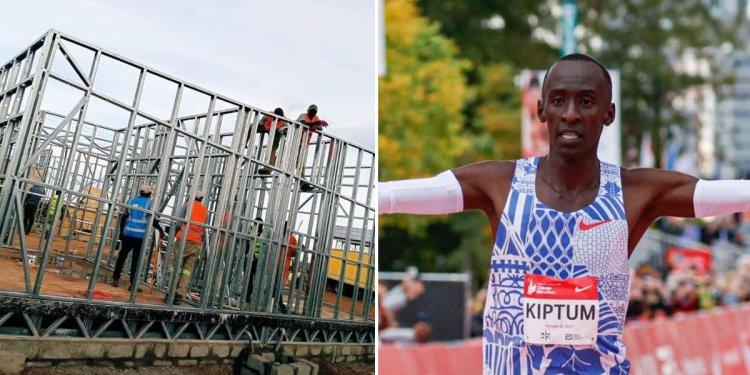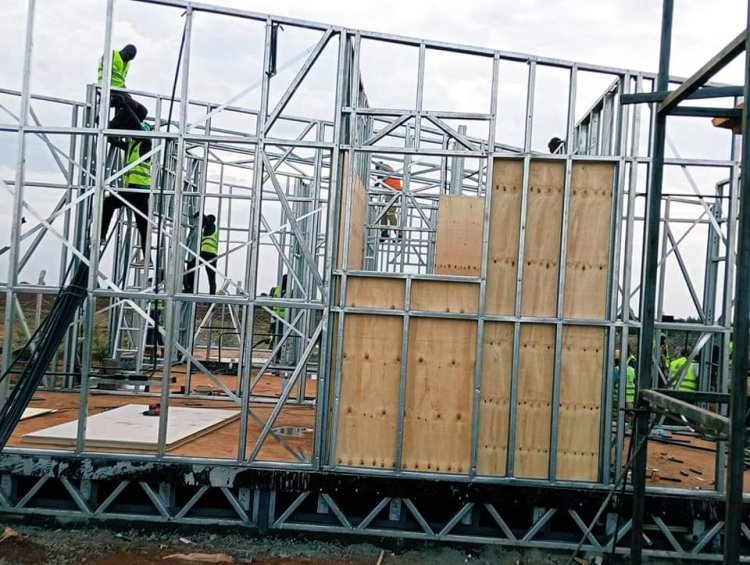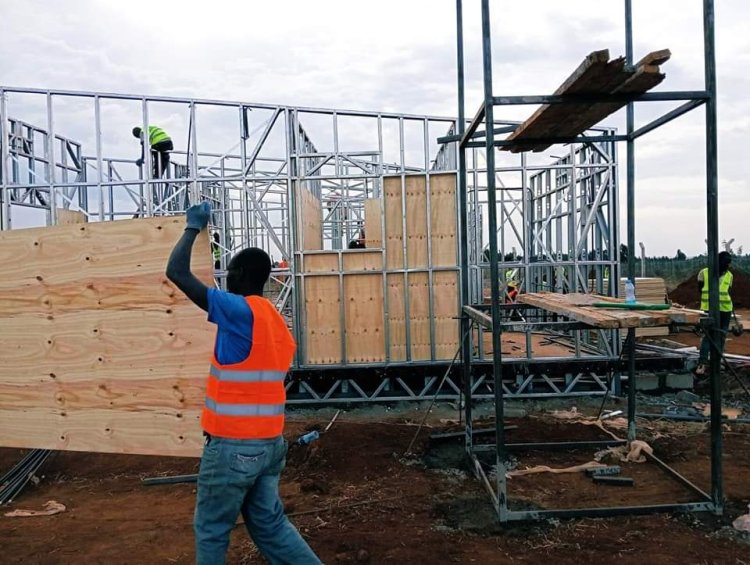Precast: Special Technique Used To Build Kelvin Kiptum's House In One Week
The construction had commenced the following day and according to photos shared online, it is on the verge of final touchups before completion

On Thursday, February 15, President William Ruto deployed experts to the home of the late world marathon record holder, Kelvin Kiptum with specific instructions to build a three-bedroomed house in one week.
The construction had commenced the following day and according to photos shared online, it is on the verge of final touchups before completion, and handing over to Kiptum's widow and children before the deceased is laid to rest on Saturday, February 24.
The contractor, Vastu Company Limited, expressed confidence that the challenge would be realised as the house's construction is projected for completion on Thursday this week.
To ensure service delivery, the contractor turned to a little-known technique used in developed countries while constructing houses, known as precast.

Ongoing construction works on the late Kelvin Kiptum's three-bedroom house. /X
According to Ultra Tech Cement, precast concrete is made by pouring concrete into a mould in a factory or plant, instead of directly pouring it at the construction site. The cured concrete product is then transported to the construction site and installed as a finished material.
There are several different types one could choose from but here are five common types:
1. Precast concrete walls
These are large concrete panels that can be used to create exterior or interior walls. They are typically manufactured in large, rectangular panels that can be connected and installed quickly at the construction site.
2. Precast concrete beams and columns
They are designed to provide structural support to buildings or bridges and are manufactured in different shapes and sizes depending on specific load requirements.
3. Precast concrete slabs and planks
These are flat panels that can be used as floors or roofs in buildings. They are typically manufactured in long, thin sections that can be easily transported and installed at the construction site.
4. Precast concrete stairs
These are pre-manufactured elements that can be utilised to construct staircases in buildings. They come with pre-installed treads and risers and can be customised to meet specific building design requirements.
5. Precast concrete retaining walls
These are elements that are used to retain soil or other materials. They are typically manufactured with interlocking edges that can be connected to create a continuous wall and can be designed to meet specific load requirements.
It is important to note that the strength of concrete is affected by several factors, including the quality of the concrete mix, the curing conditions, and the age of the concrete. Therefore, multiple samples often undergo a compressive test of concrete to ensure quality.
Decorative application of precast concrete
Pre-finished surfaces
It can be cast with a variety of finishes, including smooth, textured, and polished surfaces, which can be further enhanced with a range of colour options.
Ornamental features
It can be used to create a variety of decorative features, including cornices, mouldings, and medallions, that can be customised to suit specific design requirements.
Sculptures and statues
It can be used to create large-scale sculptures and statues that can be placed in public spaces or used as decorative elements in buildings.
Landscaping features
It can be used to create landscaping features such as benches, planters, and retaining walls, which can be designed to complement the surrounding environment.
Signage and wayfinding
It can be used to create signage and wayfinding elements such as monuments, directional markers, and identification signs, which can be customised to match the surrounding architecture.
Advantages of precast concrete
The usage of precast concrete has several advantages in construction projects. Here are some of the key benefits :
- It ensures consistent quality and uniformity, as it is manufactured in a controlled environment. This reduces defects and improves the finished product's overall quality.
- Since it is manufactured off-site it allows for faster on-site construction, reducing overall construction time and increasing project efficiency.
- It is a durable material that can withstand harsh weather and heavy loads, while also being resistant to fire, rot, and insects, making it a long-lasting choice.
- With the ability to be manufactured in various shapes, sizes, and finishes, it offers greater design flexibility and customization to suit specific requirements.
- It is a sustainable construction material that can be made from recycled materials and is fully recyclable at the end of its life cycle.
Overall, precast concrete can provide significant advantages in terms of speed, quality, cost, and sustainability compared to traditional construction methods.
Cost Of Precast Concrete
According to Floor and Decor, a construction company, the shell of a 3-bedroom house with two bathrooms house can take 12 days to construct at the price of Ksh950,000.
Another company estimates that it costs approximately Ksh1,111 per Square Metre including transport costs for a precast house compared to Ksh1,550 when using natural quarry stones.
That is, a simple one-bedroom house can consume up to Ksh700,000 upon completion, while a 2-bedroom house is estimated at Ksh1.1 million. A completed 3-bedroom can take up to Ksh3.2 million.
The construction costs are, however, determined by the size of the house, the complexity of the design and the location of the construction site.
For Kelvin Kiptum's house, the contractor indicated that the skeleton and roofing had already been completed by Sunday, a process taking a record-breaking three days.
What followed was plumbing, as well as boarding of the exterior and interior, including the use of cement boards and gypsum lighting.
"We have all the materials expected to be used inside the house including the tiles and by Thursday afternoon we shall be able to hand over the project," the contractor told the press.







